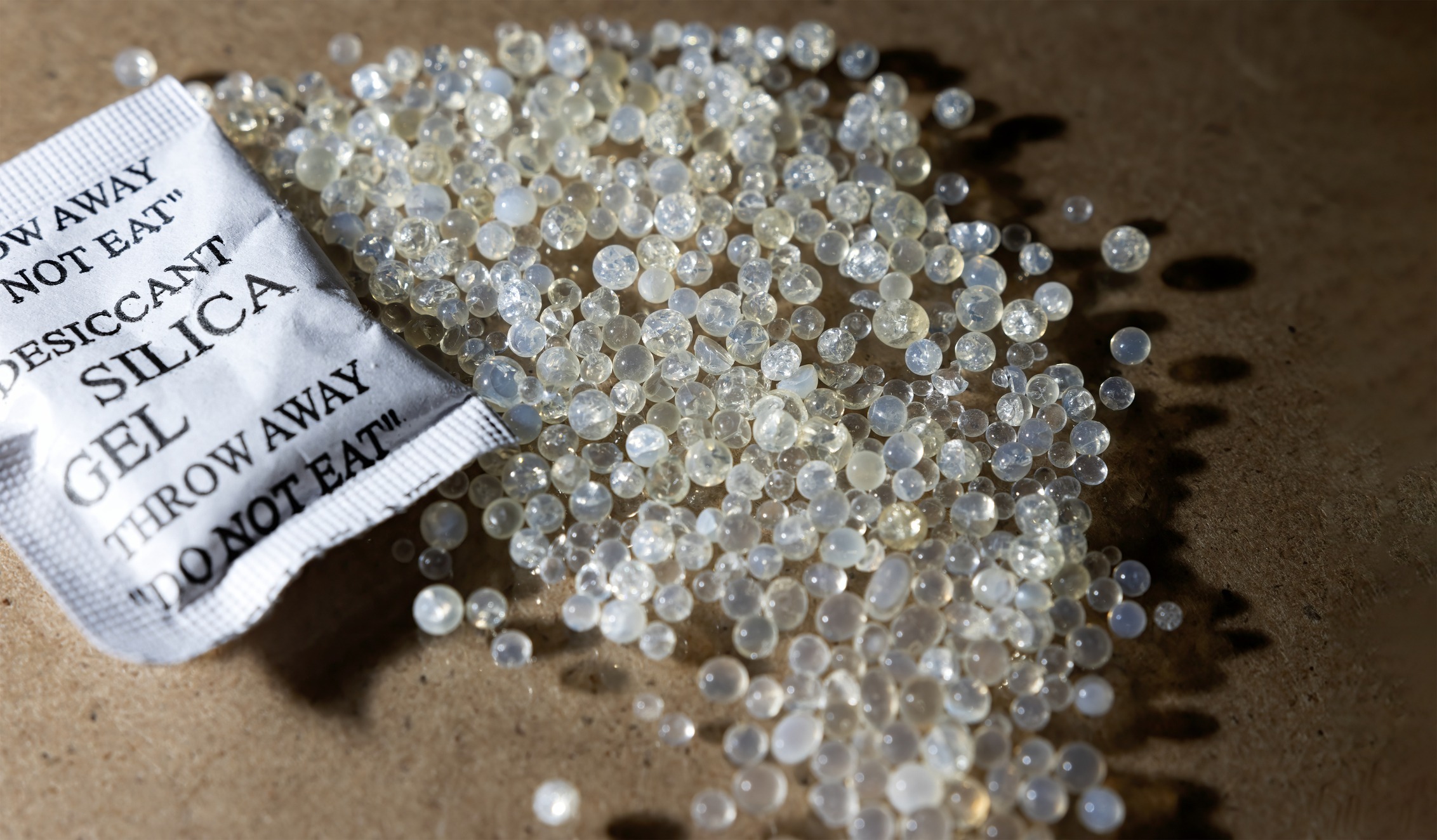- What is desiccant?
Desiccant is a moisture-adsorbing product that effectively regulates moisture and humidity levels within your packaging. Certain types of desiccant packs can also assist in mitigating unpleasant odors within packages. - What's it made of?
Clay, silica gel, and molecular sieve are three common types of desiccants.
- Bentonite clay is a natural mineral frequently employed in industrial settings and has the capacity to adsorb up to 28% of its weight in moisture. The component montmorillonite is key for the adsorption of moisture. The greater the concentration of the montmorillonite, the higher is the adsorption capacity.
- Silica gel is a pure, vitreous, porous variation of silicon dioxide derived from sodium silicate. It undergoes purification and processing to yield either granular or beaded forms, constituting the most commonly utilized type of desiccant in food storage or consumer applications. Its remarkable adsorption capacity, up to 40% of its weight in water, is attributed to its myriad tiny pores. The adsorption process is purely physical, with no alteration in the size or shape of the particles even upon saturation. Even when fully saturated, the material retains a dry appearance and texture. One of its standout advantages lies in its ability to be regenerated through heat treatment, rendering it reusable.
- Molecular sieve, a more potent form of desiccant, finds application in industrial or scientific contexts. It captures water molecules within minute pores, which are measured in Angstroms or nanometers.
- What is it used for?
Desiccants, particularly silica gel desiccants like those found here, are great for protecting firearms & ammunition, keeping tools from rusting, properly storing seed and other dried foods, keeping vitamins and pharmaceuticals fresh, maintaining the quality of herbs and spices, and much more.

